#Robert McWade
Explore tagged Tumblr posts
Text

Eugene Pallette, William Powell, and Robert McWade for Michael Curtiz‘s THE KENNEL MURDER CASE (1933)
24 notes
·
View notes
Text
Here are 10 things you should know about Robert McWade, born 152 years ago today. He was at the top of the list in Hollywood anytime someone was needed to portray a cranky so-and-so.
#Robert McWade#character actors#old movies#classic movies#classic Broadway#classic film#classic Hollywood#Golden Age of Hollywood#precode#precode movies#pre-code#pre-code movies
4 notes
·
View notes
Text
Grand Hotel (Edmund Goulding, 1932)
Cast: Greta Garbo, John Barrymore, Joan Crawford, Wallace Beery, Lionel Barrymore, Lewis Stone, Jean Hersholt, Rafaela Ottiano, Ferdinand Gottschalk, Robert McWade, Purnell Pratt. Screenplay: Béla Balász, William Absalom Drake, Edgar Allan Woolf, based on a novel by Vicki Baum and a play by William Absalom Drake. Cinematography: William H. Daniels. Art direction: Cedric Gibbons. Film editing: Blanche Sewell. Costume design: Adrian. Music: Charles Maxwell
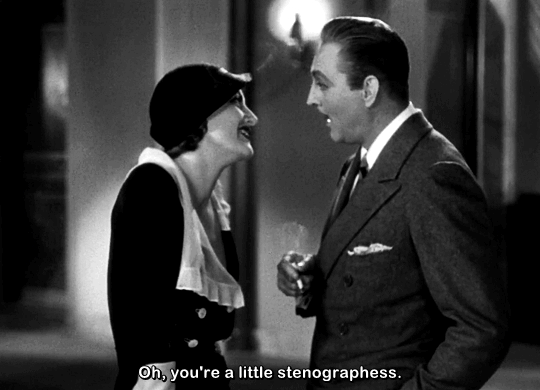

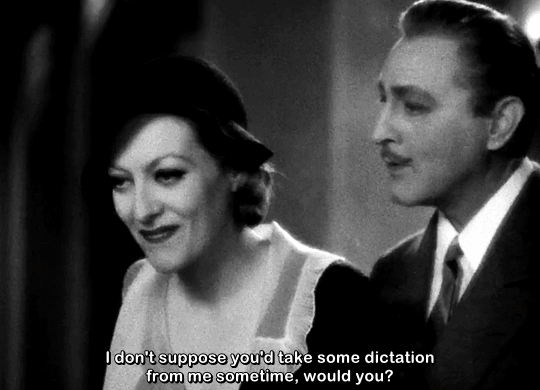
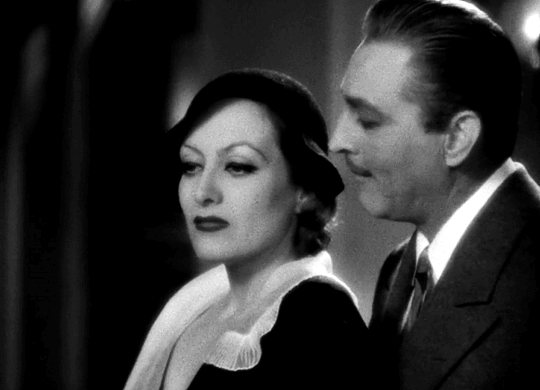
Joan Crawford and John Barrymore in Grand Hotel (1932)
358 notes
·
View notes
Text




Thirty Day Princess (Marion Gering, 1934)
Cast: Sylvia Sidney, Cary Grant, Edward Arnold, Henry Stephenson, Vince Barnett, Edgar Norton, Ray Walker, Lucien Littlefield, Robert McWade, George Baxter, Marguerite Namara. Screenplay: Preston Sturges, Frank Partos, Sam Hellman, Edwin Justus Mayer, based on a story by Clarence Budington Kelland. Cinematography: Leon Shamroy. Art direction: Hans Dreier, Wiard Ihnen. Film editing: Jane Loring. Music: Howard Jackson, John Leipold.
0 notes
Text

"PORTSMOUTH HAS ITS ATTRACTIONS, COURT INFORMED," Hamilton Spectator. October 20, 1933. Page 7. --- Withers Would Sooner Go There Than Burwash ---- Asked the Magistrate to Change His Sentence ---- And the Bench Willingly Obliged ---- "I would appreciate it if your worship could make it a penitentiary term instead of at Burwash," James B. Withers, Toronto, charged with forging and uttering a cheque for $25, told Magistrate Burbidge in police court this morning. "I have never learned anything in the reformatory, but I can learn a trade at Kingston."
The magistrate obliged the accused and imposed a term of two years in Kingston. He had previously imposed a sentence of two years less one day definite, plus one year indefinite in the Ontario reformatory. He had been convicted in Toronto for a number of similar offenses in the past.
It was testified that the accused had made out a cheque on a typewriter and had signed the name of his previous employers, a Toronto firm.
On Probation Appearing for sentence on charges of theft of $300 and $900, respectively, from their employers, Fred Drage, Toronto, and Thomas McDonald, St. Catharines, were placed on probation for terms of four years. Very stringent terms of probation were ordered by the magistrate. Both men must put up personal bonds of $1,000, while Drage must find two sureties of $250 each or one of $500, and McDonald must find two sureties of $400 each, or one of $800. McDonald must also sign the pledge and surrender his liquor permit. It was stated that Drage took the money to send his wife, a victim of tuberculosis, to the Old Country. Cecil Robinson appeared for Drage and McDonald was represented by Herman Rogers, St. Catharines.
John Schuler, charged with obtaining board by false pretenses and illegal possession of firearms, appeared for sentence and was placed on suspended sentence for two years when Cecil Robinson, defending, submitted that arrangements for restitution had been made.
Faces Stern Punishment In order that a medical examination to see if his physical condition is such that his punishment might include the lash, George McWade, convicted of assaulting a nine-year-old girl, was remanded until Tuesday for sentence.
On request of A. A. Marck, defending, Frank Jedruszak, 51 Robert street, charged with forgery and attempted uttering of a cheque for $5, was remanded for a week. Bail was set at $1,000.
Pleading guilty to a charge of keeping a common betting house, William Depew, 276 Hughson street north, was fined $25 or 21 days. Only a small sum and a few betting slips, were found in his possession. At the request of Constable Bailey, of the Royal Canadian Mounted Police, adjournments for one week were allowed in the cases of George Alaska and John Godava, charged with possession of spirits of unlawful manufacture.
Was Acquitted Steve Sobkowich, Earl street, charged with obtaining city relief to the amount of $14.76 by false pretenses, was acquitted when the magistrate held that no evidence of false pretenses had been placed before him.
[Withers was 25, an electrician by trade, sickly, married, and from Hamilton. He had been in the Guelph Reformatory before. He was convict #3212 at Kingston Penitentiary, but was transferred January 1934 to Collin's Bay Penitentiary and released in December 1934.]
#hamilton#police court#forgery#forged cheques#false pretences#obtaining goods by false pretences#illegal possession of a firearm#obtaining money by false pretences#betting house#indecent assault#sentenced to the penitentiary#kingston penitentiary#suspended sentence#probation#great depression in canada#crime and punishment in canada#history of crime and punishment in canada
0 notes
Photo
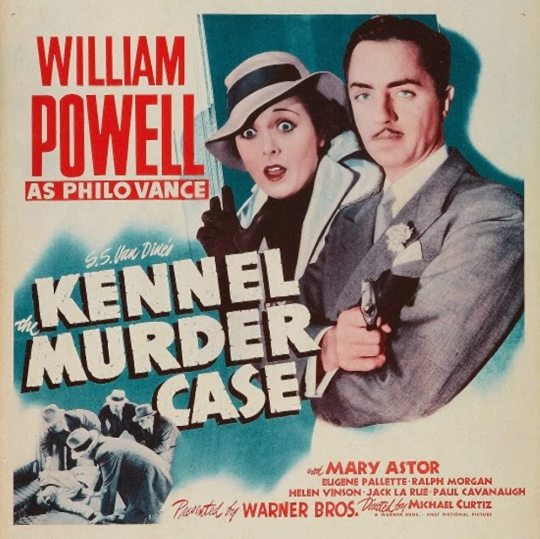
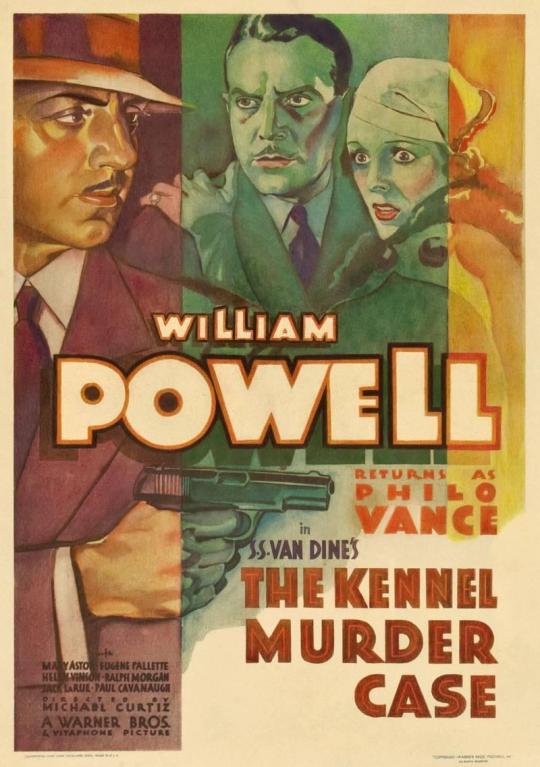

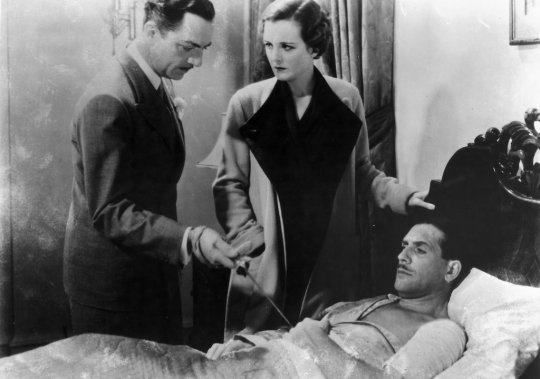

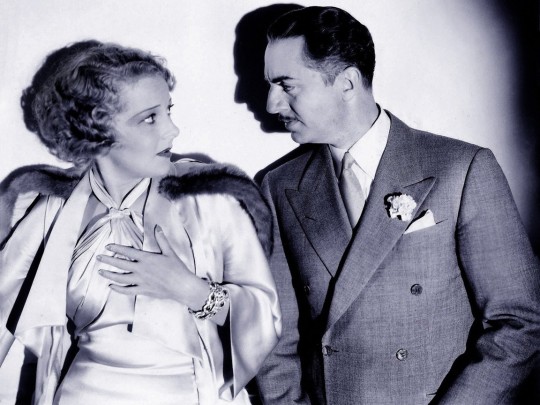
The Kennel Murder Case (1933) Michael Curtiz
December 26th 2022
#the kennel murder case#1933#michael curtiz#william powell#eugene pallette#robert mcwade#mary astor#etienne girardot#robert barrat#ralph morgan#arthur hohl#paul cavanagh#helen vinson#james lee#jack la rue#pre-code
21 notes
·
View notes
Photo










Grand Hotel (1932, Edmund Goulding)
6/18/21
#Grand Hotel#Joan Crawford#Greta Garbo#John Barrymore#Wallace Beery#Lionel Barrymore#Lewis Stone#Jean Hersholt#Robert McWade#Purnell Pratt#30s#drama#comedy#romance#hotel#hyperlink#terminal illness#rich people#class differences#industrialists#money#thieves#dancers#secretaries#gambling#ensemble cast#aristocrats#Germany#Berlin#Best Picture winner
37 notes
·
View notes
Photo



42nd Street, 1933
#comedy#musical#romance#42nd street#lloyd bacon#rian james#james seymour#bradfors ropes#whitney bolton#warner baxter#robert mcwade#ned sparks#prestige
7 notes
·
View notes
Video
tumblr
42nd Street [Blu-ray]
#42nd street#lloyd bacon#warner baxter#bebe daniels#george brent#ruby keeler#guy kibbee#una merkel#ginger rogers#ned sparks#dick powell#allen jenkins#edward j. nugent#robert mcwade#george e. stone#harry akst#loretta andrews#joan barclay#muriel barrett#louise beavers#lynn browning#edna callahan#maxine cantway#margaret carthew#wallis clark#virginia dabney#mildred dixon#al dubin#ruth eddings#patricia ellis
8 notes
·
View notes
Photo


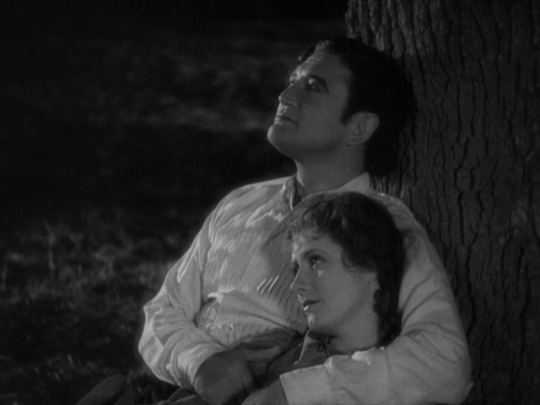

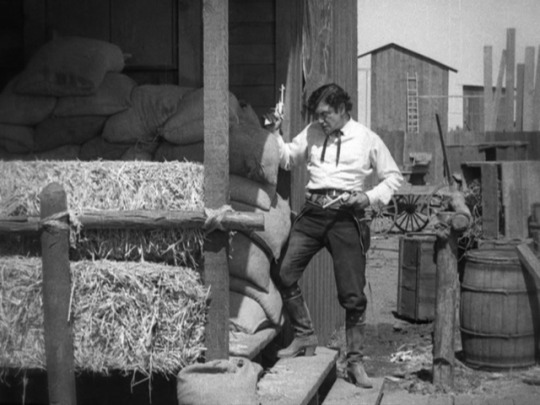
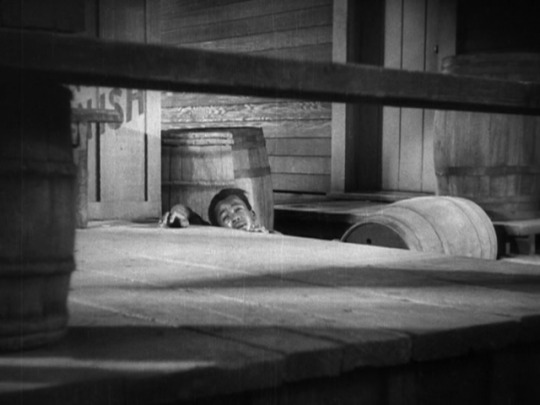
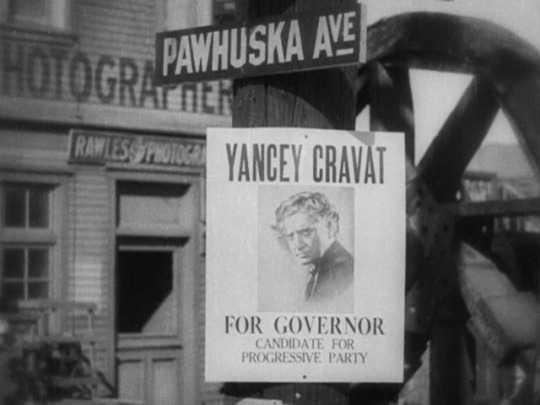
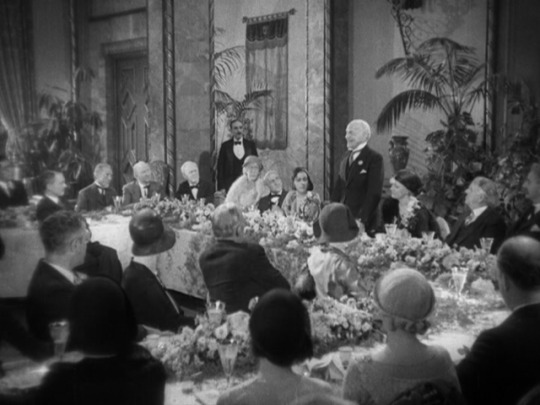

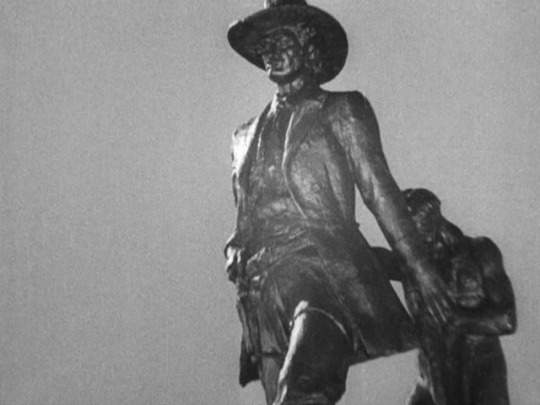
**Shots of the Movie**
Cimarron (1931)
Director: Wesley Ruggles Cinematographer: Edward Cronjager
#shots of the movie#cimarron#cimarron 1931#wesley ruggles#edward cronjager#richard dix#irene dunne#estelle taylor#eugene jackson#edna may oliver#george e. stone#roscoe ates#robert mcwade#screencaps#stills#screenshots#movie stills#movie screencaps#movie screenshots#film stills#oscar winner#cinemaotgraphy#best picture winner#filmmaking#black and white#black & white#b&w#1931#1.20:1
18 notes
·
View notes
Text
I Am a Fugitive from a Chain Gang / Prangalı Hapishane Kaçağıyım
I Am a Fugitive from a Chain Gang / Prangalı Hapishane Kaçağıyım

Sinemaya kendi içinde bir derya diyenler az demişler, bence sinema koca evrenin koca bir yansıması gibi düşünülmeli. Yok, yok içinde, arasanız da, aramasanız da bir gün karşınıza böylesi sürprizler çıkıveriyor. Hem de 1932 yılında yapılmış bir film. Toplumsal gerçekçi güçlü izler mi dersiniz, sistem eleştirisi mi, sinema tekniği mi, oyunculuk mu? Ne derseniz deyin, hepsinden bolca, yeteri kadar,…
View On WordPress
#Allen Jenkins#Berton Churchill#David Landau#Edward Ellis#Glenda Farrell#Hale Hamilton#Helen Vinson#I Am a Fugitive from a Chain Gang#John Wray#Louise Carter#Mervyn LeRoy#Noel Francis#Paul Muni#Prangalı Hapishane Kaçağıyım#Preston Foster#Robert McWade#Robert Warwick#Sally Blane#Süleyman Deveci#Willard Robertson
1 note
·
View note
Photo

7.18.17
#feet first#watched#film#letterboxd#harold lloyd#clyde bruckman#barbara kent#robert mcwade#lillian leighton#noah young
2 notes
·
View notes
Photo

KEPT HUSBANDS (1931)
2 notes
·
View notes
Text

Brian Donlevy and Glenda Farrell in High Tension (Allan Dwan, 1936)
Cast: Brian Donlevy, Glenda Farrell, Norman Foster, Helen Wood, Robert McWade, Theodore von Eltz, Romaine Callender, Hattie McDaniel, Joe Sawyer, Murray Alper. Screenplay: Lou Breslau, Edward Eliscu, John Patrick, J. Robert Bren, Norman Houston. Cinematography: Barney McGill. Art direction: Duncan Cramer. Film editing: Louis R. Loeffler.
High Tension is a lively little action comedy that comes in at 63 minutes, just right for the bottom half of a double feature. Brian Donlevy has the boisterous role of Steve Reardon, an underwater engineer for a transoceanic cable company who unwinds from his stressful job by getting drunk, telling tall tales of his undersea adventures, getting into fights, and messing around with his girlfriend, Edith McNeil (Glenda Farrell). It's a little hard to see why she puts up with Steve, let alone wants to marry him, except that she makes a good living writing pulp fiction based on those tall tales. Allan Dwan sets a nice pace for the movie, which puts Steve into a couple of knock-down, drag-out fights, one of which involves Steve and his opponent shoving a piano at each other in Edith's apartment. The more important fight, for the sake of the plot, comes when a couple of guys (one of them played by an unbilled Ward Bond) set upon him with the aim of picking his pocket. The movie's second lead, Eddie Mitchell (Norman Foster), manages to save the money that the thugs stole from Steve when he was knocked cold. Steve wakes up the next morning to find himself in bed with Eddie, who took him home for the night. It's the beginning of a beautiful friendship, with whatever homoerotic undertones you might want to find in it. Grateful for Eddie's help, and discovering that he has a degree from Caltech, Steve gets him a job with the company he works for and trains him to be his right hand man. Eventually, all this winds up with some romantic complications, with Steve, who has broken up with Edith, putting the moves on Eddie's pretty secretary (Helen Wood), whom the shy Eddie secretly loves. And there's a big underwater rescue scene (done pretty much on the cheap) that sets everything straight again. The whole thing is quite watchable, except for the sexist and racist elements that don't go down as well today as they did in the '30s. Steve has to deal with his boss's prissy assistant, F. Willoughby Tuttle (Romaine Callender in a role probably written with Franklin Pangborn in mind), a prime example of the "pansy" stereotype that afflicted movies of the era. And Hattie McDaniel is cast as Edith's maid, unimaginatively named Hattie, a role that McDaniel plays with more sass and vigor than it deserves -- McDaniel was a true professional, and if you can overlook the stereotyping her performance is a delight.
1 note
·
View note
Text
April 5, 2021: Arsenic and Old Lace (1944) (Recap: Part One)
Yeah, so...Spectrum exploded last night.

So, I'm unfortunately a little behind. BUT NEVER FEAR! I'll get back on time before you know it! So, uh...where were we last time? OH RIGHT! Let's talk about black comedy. And I don't mean black-and-white comedies, or comedies prominently featuring African-American culture and demographic. No, I mean dark comedies.

The "black comedy" functions off of macabre or taboo humor and jokes, and is often closely associated with biting satire and commentary in film. That definition is loose as hell, I know, but it's all about the subject matter. The most common subject matter for dark humor is death, of course, and related subjects to death. War, murder, strife, madness, and violence are also common topics here.
Some of the best comedies are black comedies, though. For example, Brazil (1985; dir. Terry Gilliam) focuses on themes of depression, dreams, terrorism, totalitarian governments, and madness. And it's GREAT. How about The Death of Stalin (2018; dir. Armando Iannucci)? The title ALONE should tell you everything you need to know about the tone and topic, AND YET...

It's HILARIOUS. And also informative! If you haven't seen it, I definitely recommend it. And again, that film is about, well...the death of Stalin, and the fallout of his disastrous and murderous regime. Dark, DARK topic, but very funny movie.
Dr. Strangelove, or How I Learned to Stop Worrying and Love the Bomb is about war; Fargo is about murder in North Dakota; Heathers is about a toxic relationship and the death and murder of teenagers; Birdman, or The Unexpected Virtue of Ignorance is about an actor's existential crisis and complete mental breakdown; and Trainspotting is about the devastating effects of drug addiction and features a DEAD BABY FOR CHRIST'S SAKE...and yet they're all full of laughs! Except for the baby scene. Fuck me, the baby scene in Trainspotting.

So, yeah, these are a diverse group of films, that's for sure. But where does it all start? There's 1942's To Be or Not to Be (dir. Ernst Lubitsch), which is about a Polish theatre company who need to escape in the midst of...well, 1942 Poland. If you don't get why that's dark, you should probably look up some history, bud. Charlie Chaplin would dip into the role in 1947's Monsieur Verdoux, which I mentioned last time. And there's the seldom-talked-about Kind Hearts and Coronets (dir. Robert Hamer), a 1949 film about murder for status, essentially.
But it's hard to argue that the most prominent early black comedy is 1944's Cary Grant vehicle, Arsenic and Old Lace.

Directed by Frank Capra, this film was based on a 1941 stage play, and is about...well, we'll get to it. While its prominence as a black comedy is one reason I'm watching this movie, the other is...well, to be honest, this is a movie I heard about CONSTANTLY from my Mom, as this is one of her favorites. And yet, like Dirty Dancing, I've somehow never seen it! Let's remedy that.
So, without further ado, let's get into it! SPOILERS AHEAD!!!
Recap (1/2)
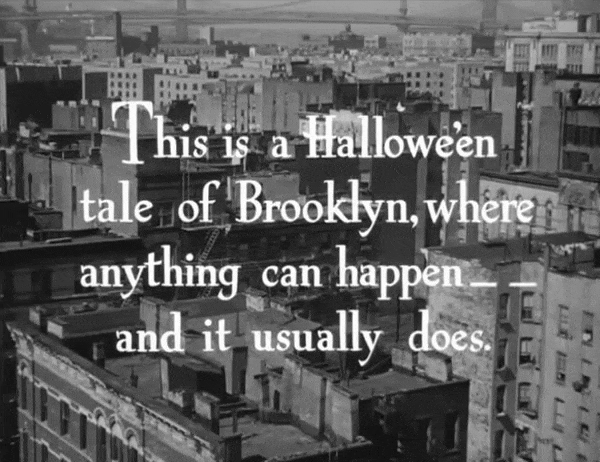
The film starts off with a BANG, as a man calls me a “big simp” to my face! Actually, he’s screaming at a Brooklyn Dodgers game, where a massive fight breaks out. This fight quickly transitions to a city hall, where a line of people are waiting to file marriage licenses. Amongst the line is Mortimer Brewster (Cary Grant) and Elaine Harper (Priscilla Lane).
Brewster is hiding from the press, as he’s a famous reviewer, and author of the Bachelor’s Bible, and it would be quite the scandal for him to get married. And yet, he’s head over heels in love with Elaine. After going through an existential crisis about the whole thing, he gives into Elaine’s sweet demeanor, and the two file their marriage license officially.
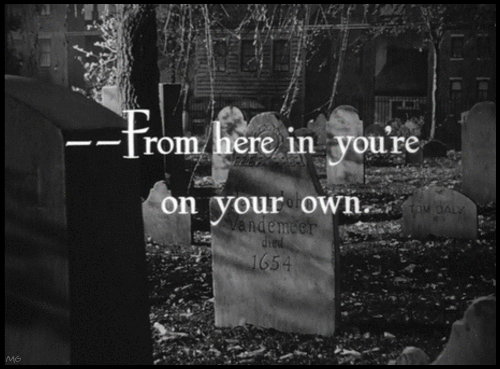
It’s Halloween day, and we move from the city to the suburbs of Brooklyn, where two policemen, O’Hara (Jack Carson) and Sanders (John RIdgely) are on patrol. Sanders tells O’Hara of the kindly Brewster Sisters, the sweetest women on Earth, both of whom live in the neighborhood. Currently, they are being visited by Reverend Harper (Grant Mitchell), Elaine’s father. He’s speaking with Abby (Josephine Hull) and Martha Brewster (Jean Adair), the kindly aunts of Mortimer.
Also living there is Mortimer’s brother Teddy Brewster (John Alexander), who apparently believes that he’s Teddy Roosevelt, which is...hilarious. Dude is hilarious, seriously. The cops come over to visit the two, and collect some clothes and toys for local charity. Also, Teddy only leaves a room by screaming “CHAAAAARGE!!!”, and running up the stairs, and I love Teddy a lot.
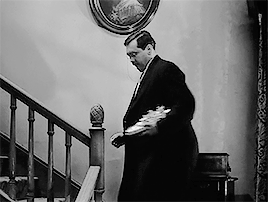
Reverend Harper and the cops leave for the night, and the sisters settle down for the evening. Abby and Martha state that their plans for Elaine and Mortimer should go as scheduled, which is probably talking about their marriage. Abby also mentions that she’s done something while she was away, to Martha’s delight and surprise. They tell Teddy that he’ll soon be digging a new lock for the Panama Canal...whatever that means.
Martha’s about to go to the basement to see what Abby’s done, but she states that because she was all by herself, the surprise is in the window seat. As she’s about to look at the surprise, Elaine shows up in the window, and the two arrive to give the happy news that they’re married. Elaine goes to tell her father of the news, while Mortimer goes to tell his sweet aunts. Afterwards, the two will be on their honeymoon, going to Niagara Falls. And I should say, they’re quite a sweet couple.

After telling the news to his aunts, he asks them where his notes are for his new controversial book, Mind Over Matrimony. They go to look for it around the house, and Teddy comes downstairs, dressed up in attire to “go to Panama.” Aunt Abby comes across a childhood picture of Jonathan, Mortimer’s brother and apparently a violent sociopath or some sort. She goes to burn the picture (geez), and Mortimer continues to look for the notes. He goes to the window seat.

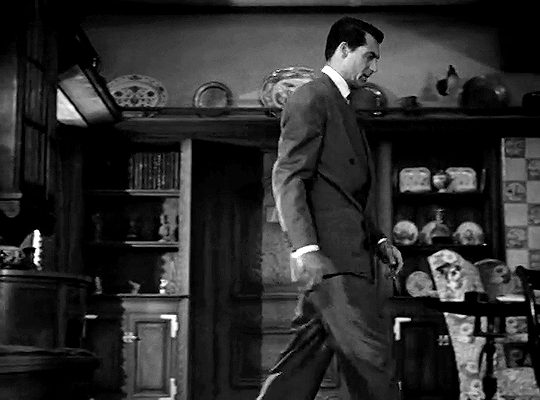

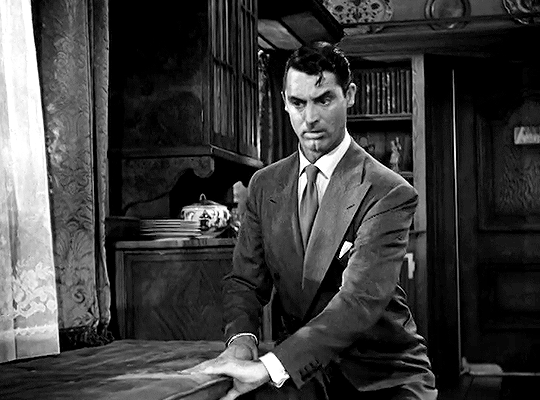
Yup! It’s a body! Looks like Abby and Martha’s sweet old lady act is a guise for some myurder! Which I know, just because it’s the most famous thing about the movie. However, Mortimer thinks the murderer is Teddy, and tells his sweet old aunts about the body, asking that he gets put into an asylum. But Abby notes that Teddy didn’t kill the man, and they already know about the body!
Which, yeah, surprises Mortimer, obviously.
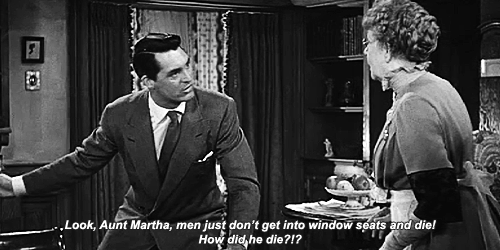
Abby cheerfully admits that the man, Mr. Hoskins, was poisoned by a tainted glass of elderberry wine, and that they did so on purpose, hiding the body before the Reverend came for a visit. The whole thing isn’t a big deal; it’s just Abby and Martha’s little secret!
After they leave, and brush off the whole thing as easy as needlepoint or macramé as a hobby, Mortimer, is completely broken by the whole affair, and is partially convinced that he’s dreaming. All the while, Elaine’s trying to get Mortimer to come over and speak with her father. But Mortimer can’t exactly forget about this whole silly murder thing, and goes to confront his aunts about it. He learns that Teddy’s digging not a lock, but a grave in the cellar. As he’s done with 10 other bodies. Or maybe it’s 11 others?

After picking up a phone call from Elaine, then hanging up abruptly (and understandably), Mortimer finds out how this whole thing started. See, the two have a “Renters Wanted” sign in their front lawn, and the neighborhood thinks that it’s there so the two sweet old ladies can offer help to anyone in need, even though they aren’t actually renting to anyone. In reality...well, they do it for another reason.
See, an older gentleman stopped by a bit ago, and he had a heart attack right there in the living room. After seeing how peaceful he looked, the two decided to bring in other lonely old men and bring in the same kind of peace. And from there...well, yeah, you get the general idea. They’ve been poisoning them with arsenic, strychnine, and cyanide mixed in with elderberry wine. Apparently, Martha’s got the mixture just right so that it tastes delicious. With all this explained, they offer Mortimer a sip of wine. Which he’s understandably nervous about.

But with all of that done, Elaine comes over to check in on him. But he’s not able to tell her anything, which greatly (and understandably) confuses her. He basically kicks her out (which enrages her, once again understandably), and calls a judge with the intent to frame the whole affair on Teddy, who’s always been.unstable. Which, for the record, is not even SLIGHTLY going to solve the problem.
But as he’s on the phone, a man named Gibbs (Edward McWade) comes in to rent an apartment. He’s all alone in the world, with nobody to care for him. And of course, this leads to the women trying to poison him with the wine. It’s a funny yet tense moment as he stops just short of drinking the wine, distracted by Mortimer’s freakout over the phone. But Mortimer gets off the phone JUST in time to scare Gibbs away and stop him from drinking the wine. And it is...VERY funny, goddamn.

As Mortimer tries to tell the aunts exactly what’s wrong with what they’re doing, the phone rings. It’s a call from Witherspoon (Edward Everett Horton), who runs an asylum that Mortimer wants Teddy committed into. However, they don’t quite have room for him, as they have too many Theodore Roosevelts at present. However, they do need more Napoleon Bonapartes. I love this goddamn movie.
Still, Witherspoon agrees to take him in despite that, and Mortimer head out to get the paperwork done. However, he asks his aunts to not do anything until he gets back, and he also proises that he’ll attend the “services” for their latest victim. He leaves, and kinda steals a cabbie’s car in the process (I love this movie, I’m telling you), and Abby and Martha start shutting things down for the night. However, as they do, they get a mysterious knock on the door. They pretend not to be home...only for a man with an ominous scar to enter the room regardless.

Let’s pause here, shall we? See you in Part 2!
#arsenic and old lace#frank capra#joseph kesselring#cary grant#priscilla lane#raymond massey#jack carson#peter lorre#jean adait#josephine hull#john alexander#john ridgely#userveil#johnsonshildy#userkeanu#usersasha#user365#comedy april#365days365movies#365 movie challenge#365 movies 365 days#365 Days 365 Movies#365 movies a year
19 notes
·
View notes
Photo




Ladies of the Jury (1932) Lowell Sherman
May 15th 2021
#ladies of the jury#1932#lowell sherman#edna may oliver#jill esmond#ken murray#kitty kelly#robert mcwade#cora witherspoon#charles dow clark#tom herbert#guinn 'big boy' williams#women of the jury#pre-code
21 notes
·
View notes